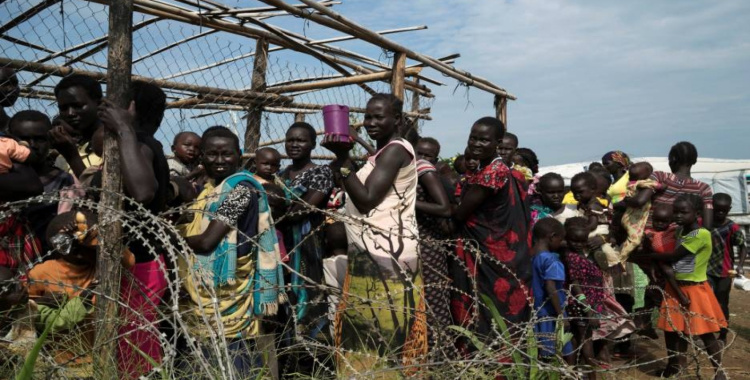The Critical Role Played by Unarmed Civilian Protectors in War Zones
Press Clip Source: Pax Christi Peace Stories
Date: February 26, 2019
Link to source: Here.

Pax Christi International UN Representative
The United Nations, like most of its member countries, has historically relied, as one facet of its efforts to resolve regional global conflicts, on deploying to areas of active conflict international teams of armed soldiers. Yet the presence of armed forces, while perhaps prompting a temporary cessation of overt violence, cannot lead to a sustained peace.
Guns – which represent, quite explicitly, a looming threat of violence – cannot eliminate violence. While flashing a weapon may temporarily, and artificially, stave-off a violent episode, it does not address (and indeed may only exacerbate) the underlying inequities and unresolved problems that led to the violence in the first place. True resolution of violence cannot occur until and unless the issues that gave rise to the violence – whether long-simmering resentments or inequities; exclusion; a failure fairly to share and allocate resources; a lack of food, water, or housing; or other dispute – are addressed and resolved.
In a recent panel presentation at the United Nations, a university professor from the U.K. shared findings from her ongoing academic research focusing on new insights and understandings about the behavior of armed groups, as well as the most effective ways of securing peace. Her findings suggest that the world community must question the assumption that where there is violence, the best way to address that violence is through the presence of armed soldiers. The growing body of empirical evidence suggests that in a number of settings, nonviolent responses to violence are more effective than are armed responses. Furthermore, such nonviolent responses are easier and less expensive to employ, with the logistical and financial costs of employing unarmed civilian protectors, particularly in remote geographical areas, being but a fraction of those required to deploy military forces.
Another panelist at the UN session, an unarmed civilian protector working in Mindanao, Philippines, explained that, as an unarmed civilian protector, her first goal when entering a community is to reach out to those around her, getting to know them well, and gaining their trust. (By contrast, such trust-building is elusive at best in situations in which local communities of women and children are being “protected” by armed military forces, most often consisting of men whose deployment is short-term, and who may not even speak the local language.) The key to peacekeeping, she explained, is to engage in building and strengthening interpersonal relationships, thereby strengthening the capacity of the community itself to respond to challenges. For it is the community itself, and not an outside armed force, that understands best its own population, history, experience, and challenges. The community itself, by coming together, takes ownership of preserving the peace.
Given our human history, in which war is shown, repeatedly, to beget more war, it is fair to question whether the traditional model of sending armed peacekeepers to preserve peace is not only oxymoronic and ineffective, but illogical (recognizing the base motives of war profiteering). Unarmed civilian protectors have been shown capable of performing most of the traditional tasks of armed peacekeepers – including patrolling, engaging in dialogue, and negotiating. Unarmed civilian protectors – who often work in the most isolated and remote areas of the world – break the isolation of the local communities in which they live and work, serving as a connection with the outside world and being a daily visible reminder that someone from the outside world is watching, and cares about, what is happening there. The track record of unarmed civilian protection – a dramatic decrease in violence perpetuated against members of the communities with which they live – provides a blueprint for a more effective and humane response to global conflicts.
And their track record also illustrates why peace is not simply the absence of war. True and lasting peace is determined by how people treat each other – and not by the weapons they carry.
- For more information about Unarmed Civilian Protection (“UCP”), see https://theglobalobservatory.org/2017/09/sustaining-peace-unarmed-civilian-protection/.
Mary Yelenick is Pax Christi International’s Main Representative at the United Nations (UN) in New York.
